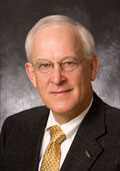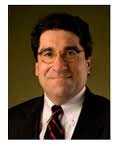VOL. 37 | NO. 30 | Friday, July 26, 2013
VUMC not only Midstate medical center facing layoffs
By Jeannie Naujeck

Becker
Patients aren’t the only ones feeling pain at some Tennessee hospitals.
Large-scale staff cuts at Vanderbilt University Medical Center, reported to be in the hundreds, could be a sign of things to come if health systems can’t find a way to stanch the bleeding from unreimbursed patient care.
Like many industries in the state, hospitals are dealing with a generally shaky economy and technology trends reshaping its business – in this case, advances that lower the cost of care and, subsequently, bring in less money.
But they’re also facing some very industry-specific threats to revenue that include cuts to payments from Medicare and Medicaid, a new set of requirements to transform the way hospitals care for patients, and downward pricing pressure on hospital services from private insurers.
“It’s pretty dire for a lot of our hospitals,” says Craig Becker, president of the Tennessee Hospital Association.
“Vanderbilt just happens to be the ones in the news right now. Other hospitals have done it, and there will be even more.”
This month, VUMC laid off a reported 300-plus staffers as part of an effort to cut $100 million from its 2014 fiscal budget to make up for an expected loss of revenue due to lower reimbursements and more charity care.
And the first cut may not be the deepest. As many as 1,000 jobs could be affected as VUMC plans further cuts totaling $250 million over two years.
Already, the university is coping with a legal backlash from the job cuts; one of the fired employees has filed a lawsuit alleging she was targeted for using family and medical leave, and attorneys are looking into the methods Vanderbilt used to select those terminated.
Meanwhile, officials at the Midstate’s two other large health systems say there are no plans for layoffs at this time.
“There’s nothing imminent,” says Amanda Anderson, spokeswoman for Saint Thomas Health, which reduced 38 billing positions in March as part of a system-wide restructuring and rebranding. Last August, the system eliminated 150 hospital support positions.
“But every hospital is constantly evaluating their expenses and reimbursements to make their budget goals. They’re under constant review.”

Giorgio
Karen Giorgio of TriStar says the health system has no immediate plans to cut staff at any of its area hospitals, which include its Skyline, Southern Hills, StoneCrest and Summit medical centers outside the city and Centennial Women’s & Children’s near Centennial Park.
“We have many open positions currently available,” she says.
TriStar’s corporate parent, Nashville-based HCA, owns more than 160 hospitals and expects to report a 4 percent increase in revenue and 15 percent rise in income for the second quarter of 2013 over the same period in 2012.
Along with Saint Thomas, TriStar and VUMC, area health systems include Williamson Medical Center, owned by the county; HighPoint Health System, owned by Nashville-based hospital owner LifePoint; University Medical Center in Wilson County; and Nashville General Hospital at Meharry.
A spokeswoman for HighPoint Health System says all hospitals are being required to do more with less, but HighPoint has actually added clinical positions to handle increased patient volume and growth of service lines, including surgery, orthopedics and sports medicine, emergency medicine and obstetrics, in its service area of Sumner, Smith and Trousdale counties.
“Successful hospitals must continually manage expenses, particularly in non-clinical areas, to allow them to continue providing high quality services that are cost-effective and best meet the needs of the communities they serve,” spokeswoman Rachel Lassiter says.
HighPoint is a division of LifePoint, which owns nearly 60 hospitals in 20 states. LifePoint expects to top $3.65 billion in revenue this year.
A special case
Vanderbilt officials are saying little about the job cuts beyond a statement by Jeff Balser, MD, vice chancellor for health affairs and dean of the school of medicine.
But VUMC’s “economic repositioning” is an abrupt change in outlook for a health system that in fiscal year 2012 brought in 7 percent more revenue than the year before, added 69 new beds to handle higher patient volume and planned to add 34 new beds this year to meet growth in inpatient services.
VUMC was touted as a key factor in Vanderbilt University’s financial stability during fiscal 2012.

Balser
“Particularly noteworthy in a year of declines in governmental health care reimbursement and funding from the National Institutes of Health, Vanderbilt University Medical Center wrapped up FY [Fiscal Year] 2012 with continued strong performance,” Chancellor Nicholas Zeppos wrote.
“Vanderbilt’s medical center continues to grow and thrive in a rapidly changing environment by providing world-class health care services with continued positive financial performance,” the report goes on to say.
But the university cites increasing levels of uncompensated care, and anticipates continuing reductions in the amounts it gets reimbursed for medical services provided to government-insured patients and the uninsured as reasons for the cuts.
“VUMC is experiencing major revenue reductions per unit of service amounting to more than $70 million compared to the prior fiscal year,” the university said in a statement.
Weighing on VUMC and every other hospital in the nation is the triple threat of lowered payments from Medicare and Medicaid, more uninsured people utilizing the emergency room and downward pricing pressure from insurance carriers.
Medical advances also are moving many surgeries and treatments from inpatient to outpatient settings, which bring in less money. There’s also competition from doctor-owned ambulatory care facilities.
VUMC, the region’s premier academic medical center, occupies a unique position in Middle Tennessee. It has the only Level 1 trauma center, the only Level 4 neonatal intensive care unit and the only dedicated burn center in the area, meaning it absorbs a large amount of high-cost unreimbursed care from patients without the means to pay for those services.
The total cost of uncompensated care and other community benefits last year was nearly $500 million, the university said in its latest statement. Charity care and bad debt from patients who could not pay their medical bills or deductibles alone cost Vanderbilt $154.3 million in fiscal 2012, according to its annual report.
All hospitals in the state have seen uncompensated care go up. Statewide, Tennessee hospitals provide about $1.4 billion total, Becker says. Nashville General Hospital, the city’s “safety net” facility, estimates it will absorb $93 million of it this fiscal year, more than 40 percent of total revenues.

Zeppos
But until recently, VUMC hadn’t given much hint of budget trouble. For the fiscal year that ended June 30, 2012, health care services generated $2.46 billion of the university’s $3.71 billion in total revenues, a full two-thirds of the University’s total revenue and an increase of 7 percent from $2.29 billion in 2011.
A positive factor in the revenue trend was a decrease in TennCare/Medicaid beneficiaries and a gain in patients with private insurance, sweetening the patient mix toward those whose insurance pays VUMC more for medical services.
That’s likely due to VUMC’s quality rankings. It is once again the top-ranked hospital in the Nashville area and was nationally ranked in 11 specialties by U.S. News and World Report.
Still, VUMC expects to bring in less this year and, in addition to the budget cuts, is looking for new revenue streams.
This spring, the VUMC health system began competing with private insurers by offering its own health plan to large employers such as Nissan North America. By negotiating to insure and care for large groups, VUMC can offer employers some health care pricing certainty while controlling its own costs and reimbursements and adding a new income stream from premiums.
However, VUMC will also assume financial risk if a patient’s or group’s medical care turns out to be more costly than it projects.
Medicaid debate
A major factor weighing on hospitals is the question of how Tennessee will handle Medicaid expansion. Last summer, the Supreme Court ruled that individual states could decide whether they would take federal money to expand their Medicaid programs to cover more poor and working poor with government-subsidized health insurance.
Federal money allocated for that purpose in the Patient Protection and Affordable Care Act is already flowing to states that have agreed to expand Medicaid, Becker says.
Of Tennessee’s 900,000 uninsured residents, up to 200,000 people could be covered through Medicaid expansion, Becker says.
But instead of expanding TennCare, the state’s Medicaid program, Gov. Bill Haslam is asking permission from the U.S. Department of Health and Human Services for a waiver that would allow Tennessee to enroll more Medicaid-eligible residents in federally-subsidized commercial health plans through the state’s health insurance exchange.
Beginning in October, the exchange will provide an online marketplace for individuals and small businesses to shop for a variety of health plans from major insurers, and some 500,000 people will qualify for federal subsidies to help them purchase these plans.
Nationwide, hospitals have supported Medicaid expansion, since they must absorb the cost of treating the uninsured and pass it on in the form of higher premiums for everyone else. It’s put some legislators in an uncomfortable position of opposing an industry that has a huge economic impact in every state – and a disproportionate one in Tennessee.
While the THA could not convince the governor and legislators to pass Medicaid expansion this spring, hospital advocates are renewing their push to do so this fall.
If they fail, Becker says, expect more pain in the hospitals.
“It really does speak to the reason why we absolutely need to have the expansion population coverage,” he says.
“Coverage, frankly, is the only way we’re going to make up some of these losses.”